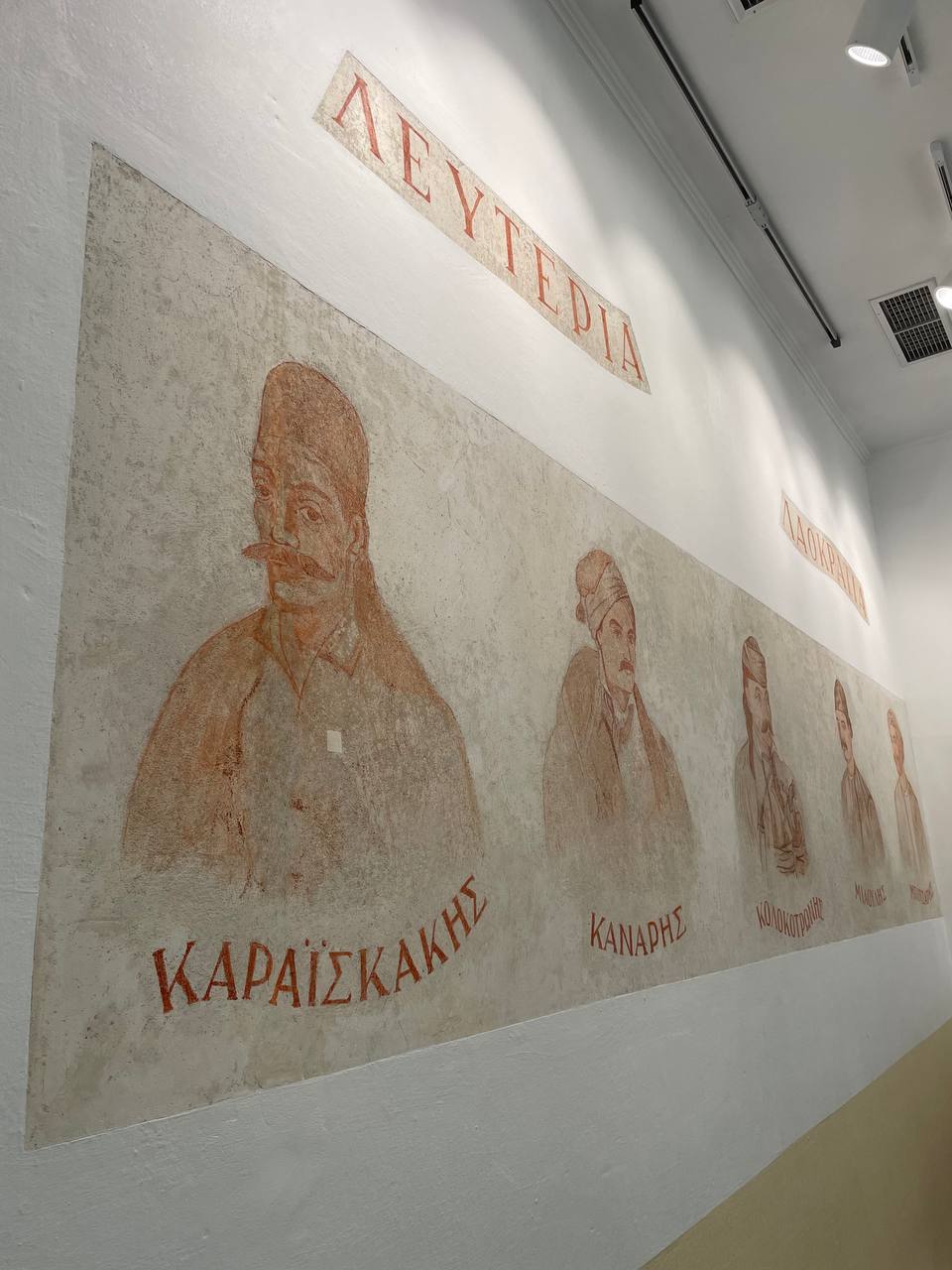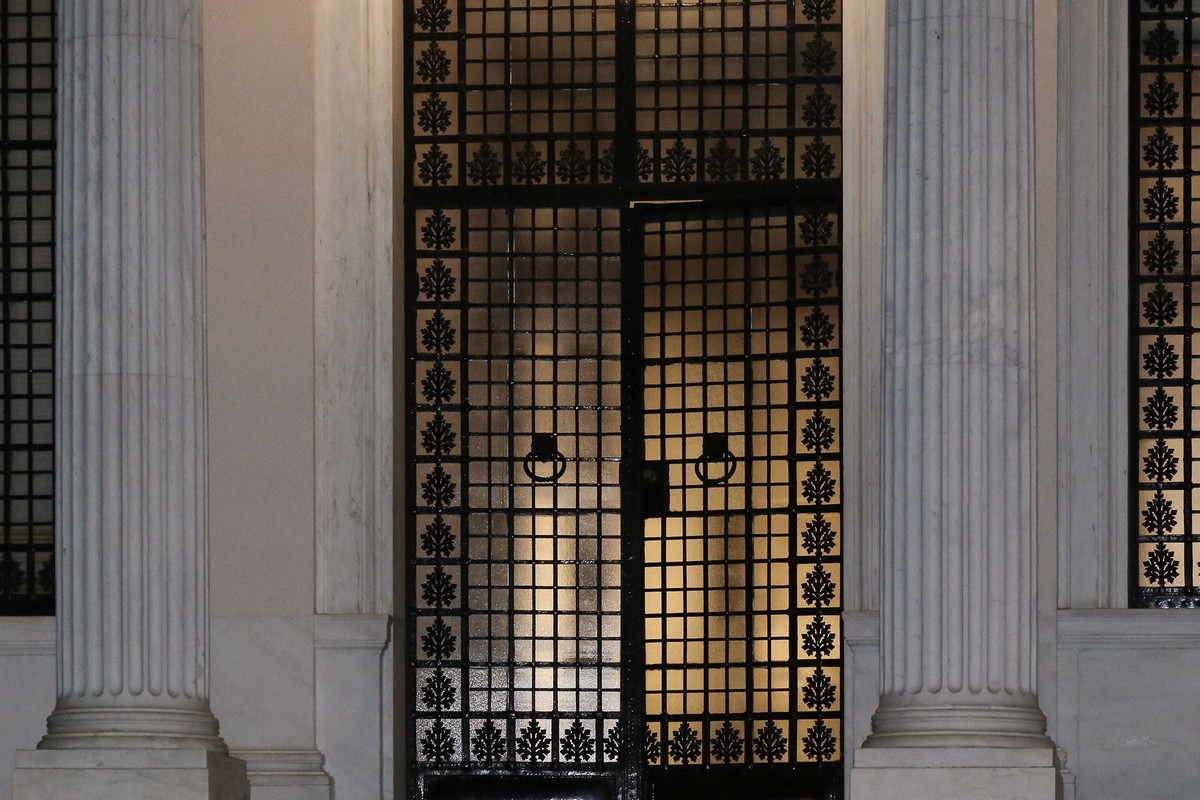We are in Koryschades, in a village in Evrytania which is about 300 kilometers from Athens, in an effort to feel the history of the Resistance 80 years later.
We met him Peter Drosoborn and raised in Koryshiotis, who is from the last living witnesses of the historical events that took place in this remote village.
A stone building rises in the village square. Some slogans are faintly visible on the walls.
The building that became the National Council of 1944, Koryschades Evrytania
This is the iconic primary school where from 14 to 27 May 1944 the work of the National Council was heldwhile most of the country was occupied by the Axis powers.
This building is one landmark with a symbolic and historical load. It was not chosen by chance as the seat of the National Council. The village of Koryschades, due to its naturally fortified location against air attacks, was at the center of resistance actions.
The National Council of Koryschades is registered in modern Greek history and in our collective memory as one station point in the Resistance Struggle.
It functioned as a hospital but also as the headquarters of the 13th Division of ELAS and its printing office, where the newspaper “Free Greece»while for a short time the headquarters of ELAS was established there.
The building of the School of the Koryshion community began to be built in 1938 and was completed a year later with money from displaced Koryshion residents. Before the Occupation, for a short time a radio station and a cinema operated there, making the place a cultural center of the region.
The murals of the fighters of 1821 and the historical forgery of the National Guard
We meet on the first floor of the school, where the National Council took place murals of heroes of the 21st Revolution. For the needs of the National Assembly, artists painted on the walls of the building fighting slogans of the period and faces of heroes of the 21st revolution. In this way they depicted and underlined her historical relationship between their own struggle and the Greek Revolution.

The frescoes of the fighters of 1821 on the first floor of the building
In this space that extends as one historical palimpsest is semiotically reflected n login of the Resistance Struggle of 1944 with the Struggle of Independence of 1821.
Petros Drosos from Koryshion remembers that “immediately after 45 came the National Guard” and as they entered the building they exclaimed “They are all traitors, destroy it”.
After the war, on May 17, 1945 the National Guard whitewashed the muralswhile in 1955 the settlement was renamed “Kypseli” in a attempt to erase the memory of the Resistance Struggle. As Petros Drosos testifies, “They started with sharp objects and then destroyed them with lime.”
Historical and narrative time become one.
Their restoration was to take place several years later. In 1987 the old frescoes were revealed. Petros Drosos remembers that “Merkouri was the Minister of Culture and we showed her the photos. Mercury brought to light the murals that were covered by the National Guard».
The secret elections in occupied Greece
In 1944, the Political Committee for National Liberation (PEEA) organized secret elections with the ultimate aim of liberating Greece. On May 14 at 2 in the afternoon, the first historic meeting began with the singing of the National Anthem and the eulogy by Metropolitan Joakim of Kozani.
The National Councilors with raised hands all repeated the oath together, which echoes the core values of the council and the ideals of the resistance struggle:
“I swear that I will faithfully perform my duties, as a member of the National Council, having as my guiding principle the interest of my Homeland and the Greek People. That I will fight with self-sacrifice, for her liberation of my country from the yoke of the conquerors, that I will defend them everywhere and always popular liberties and I will be the supporter and guide of the people in the struggle for my freedom and sovereign rights.”
Women were given the right to be elected for the first time.
For the elections, a different procedure was provided for the free and occupied territories. Petros Drosos notes that “they decided to hold elections in all of Greece, free and occupied by the Germans. The free elections that took place in free Greece took place by ballot as normal, while in the occupied regions that were German, they took place from house to house. But they did not come from Eastern Macedonia. Because the area was under Bulgarian rule there at the time.”
The establishment of the National Council
The body of National Councilors was diverse politically, but the demand for Resistance was universal.
Petros Drosos reports that “There was no discord, no hatred. We were all fighting together against the conqueror».
As characteristically stated in the Resolution of the Koryschades, the National Council was “composed of representatives of the entire Greek people, who came together to declare their indomitable will to fight to the last breath for the liberation of the countrythe full crushing fascismits restoration national unity and her popular sovereignty».
According to the testimony of Petros Drosos, the National Assembly “consisted of all the parties, among them most of the scientists and university professors and others”. The total number of elected members of the National Council amounted to 218 people.
The historical legacy
On May 27, 1944, the work of the National Council is completed and the Koryshades Resolution is unanimously approved. This is clearly reflected in it project of the National Resistance for a struggle that will give birth to a power from below. The quote from the second of the fifteen articles voted for is typical: “All powers originate from the people and are exercised by the people. Self-Government and Popular Justice are fundamental institutions of the public life of the Greeks”.
The conclusion of the 1944 National Council has repercussions in many aspects of public discourse, as we employ it today.
Human testimonies seem to add color to the mosaic of history.
A more indicative example is the active citizenship of women of the period which is reflected through their participation in the voting for the formation of the National Council and the election of – indeed – five women National Councillors. It was pioneering for the conditions of the time but also for the country as it was given for the first time the right for women to be elected members of the National Council.
In the explanatory statement of the Act it is noted: “we thus abolish the anachronistic perceptions that prevailed until now in Greece. After all, during the war in Albania and continuously throughout the Occupation, the women of Greece took such an active part in the fight against fascism that they won the right to have an opinion and manage the commons.” Machi Mavroidi-Hiurea, Kaiti Nisyriou-Zevgou, Maria Svolou, Foteini Filippidi and Chryssa Hatzivasiliou were the first five female National Councilors and the first elected women in Greece.
Also, a typical example is vernacular support from the National Councilors, at a time when the tug-of-war between the municipality and the cleaner is intense on the language issue. At a rally for public education with the speaker Kostas Sotiriou, the slogan “Elementary becomes a reality in junior and senior schools” can be seen on a banner.
How is History written and how do we become part of it?
The National Council of Koryschades is registered in modern Greek history and in our collective memory as one station point in the Resistance Struggle.
In the axis of history, certain historical events often respond fragmentarily and the narrative landscape seems fragmented.
Human testimonies seem to add color to the mosaic of history. Like that of Petros Drosos.
It’s those moments when historical and narrative time become one.
#fighting #conqueror #Resistance #Koryschades #Evrytania

